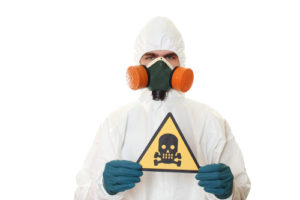Mold in the Workplace – Rights and Responsibilities

Mold Can Cause Sickness and Allergic Reactions. Keep Your Staff at Their Best by Being Mold Free!
Residential mold problems have been the subject of many news stories, but commercial buildings are not immune to the risk of infestation either. The Occupational Safety and Health Administration (OSHA) counts mold as a health and safety risk in the workplace along with asbestos, toxic metals and other dangers.
Combating Mold in the Workplace
OSHA is charged with enforcing the government statutes requiring companies to maintain “safe and healthful workplaces” for their employees. Mold is found naturally in the environment, so there are currently no standards in place for maximum acceptable levels, but it is considered a recognized health risk.
Mold feeds on organic matter, which presents an indirect risk. It can eat away at building materials and cause structural damage, compromising the safety of employees.
Water is the key element for mold growth, so businesses with kitchens and areas with excessive dampness are likely candidates for infestations. HVAC systems and plumbing should also be inspected regularly for signs of leaks and other damage.
Mold Treatment Guidelines
OSHA’s guidelines include recommendations for effective mold treatment:
• Mold removal professionals should be consulted before starting any course of action.
• Surfaces should be lightly misted beforehand to suppress dust.
• Cleanup workers should use personal protection equipment such as gloves, goggles and masks.
Effective Mold Treatment for Commercial and Residential Buildings
Stern Mold provides thorough and efficient mold removal services for home and business owners in NYC, Long Island and northern NJ. Visit our website for more information about our eco-friendly, non-intrusive MoldExterm system and find out how you can schedule a free mold inspection for your building.
